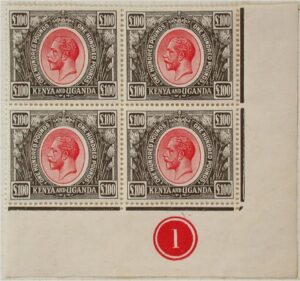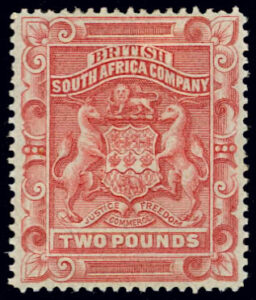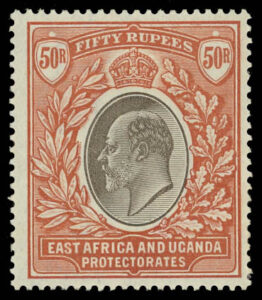 What can Be Done: Collecting the stamps of British Commonwealth is probably the most popular philatelic specialty worldwide. In nearly all major stamp collecting countries (such as the United States and Germany), specializing in British Commonwealth ranks second behind the stamps of the native country itself. In no country does collecting British Commonwealth rank first, but because it ranks second in so many areas, the overall number of British Commonwealth collectors is very large.
What can Be Done: Collecting the stamps of British Commonwealth is probably the most popular philatelic specialty worldwide. In nearly all major stamp collecting countries (such as the United States and Germany), specializing in British Commonwealth ranks second behind the stamps of the native country itself. In no country does collecting British Commonwealth rank first, but because it ranks second in so many areas, the overall number of British Commonwealth collectors is very large.
British Commonwealth offers the specialist wonderful collecting opportunities. Scores of British colonies were among the earliest issuers of stamps, and many of the world’s great rarities are Commonwealth issues. The classic stamps of most of the area are very specialized and very interesting (Canada and British North America and Australia and States are going to be dealt with in future articles). The classic stamps of British Commonwealth are very specialized, and nearly every country can be specialized in to an almost unbelievable degree. Beginning about 1890, most of the stamps for the Colonies were produced by the Crown Agents. Nearly all the issues for most countries for the period 1890-1930 have a similar look, with the stamps being distinguished not but design difference but by name alone. Only after about 1970 did different countries begin to individuate themselves on their stamps. There are currently more than one hundred different British Commonwealth issuing entities (many are not countries and exist mainly to issue stamps) issuing tens thousands of stamps every year at an enormous new issue cost. Most collectors of British Commonwealth either stick to one or two countries or else establish a cutoff date after which they don’t try to collect any more stamps.
about 1970 did different countries begin to individuate themselves on their stamps. There are currently more than one hundred different British Commonwealth issuing entities (many are not countries and exist mainly to issue stamps) issuing tens thousands of stamps every year at an enormous new issue cost. Most collectors of British Commonwealth either stick to one or two countries or else establish a cutoff date after which they don’t try to collect any more stamps.
British Commonwealth stamps have a long history in philately as a currency hedge. Because British Commonwealth stamps are so popular in so many countries, collectors in countries with monetary controls often gravitate towards these stamps to have items that are easily saleable in other countries. This accounts for the immense popularity of British Commonwealth today in Russia and China (in China, USA stamps are also very popular).

Specialty Albums: The choices here are all good. The Scott Specialty series is strong; Lighthouse, as usual, is wonderful; and Gibbons makes an excellent specialty album (though it is far too specialized for many collectors).

Availability of Material: Because of the number of stamp issues involved and the popularity around the world, British Commonwealth stamps are among the most actively sold and available on the market. Depending on how widely you define what you are looking for, you should always be able to acquire nice new material for your collection at a price within nearly any budget.
Overall Collecting Grade: A
